- Market leadership shifts again flipping between US tech and small caps
- Treasury yield curve narrows
- Bitcoin slides below $50,000
Key Events
After the biggest rally on Wall Street in nine months yesterday, on Wednesday contracts on the Dow Jones, S&P 500, NASDAQ and Russell 2000 moved slightly higher as investors took the chance to slow down and breathe. The current narrative says traders have been repositioning portfolios according to the latest headlines on the Omicron variant of COVID-19, thereby adding volatility and whipsawing markets.
Yields on US Treasuries fell and the dollar was also weaker.
Global Financial Affairs
Investors were encouraged by the latest reports showing that COVID-19 vaccines provide partial protection against the new Omicron variant. However, after the initial relief that additional lockdowns no longer appear likely, we expect volatility to increase as investors refocus on tightening US monetary policy.
US futures rose for the third day on Wednesday. However, the paradigm shifted from yesterday's leadership by mega-cap technology stocks on the NASDAQ 100 to small caps on the Russell 2000 index, perhaps indicating that investors are re-focusing on the economic recovery story.
In Europe, a rally in healthcare stocks overshadowed a slump in the energy sector, leading the STOXX 600 Index higher after its strongest two-day gain in over a year.
Earlier Wednesday morning, Asia was green across the board. The MSCI AC Asia Pacific ex-Japan Index surged over 1%. Technically, however, downside risk remains.
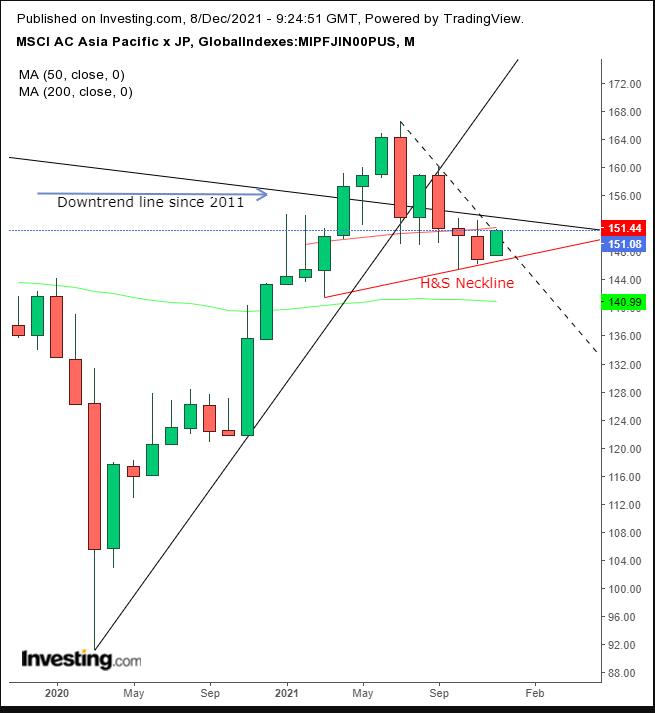
The index may be developing a weekly H&S top after falling below its uptrend line since mid-March. The price has to contend with the downtrend line since the July peak, reinforced by the 50 WMA. On the monthly chart, the price found resistance by a falling trendline since 2011 and is finding resistance by the 200 MMA for the third month in a row. Below, the 50 MMA supports the top.
US shares on Tuesday saw their most significant jump in nine months, with the NASDAQ 100 notching 3% gains, followed by the S&P 500 and the Russell 2000, each adding about 2%. The Dow Jones lagged, climbing just 1.4%. The major averages all wiped out Omicron-related losses, as each eyes new record highs.
The 10-year Treasury yield pared a back-to-back advance, as the spread between short- and long-term notes tightens ahead of expected rate increases, creating a challenge for the Federal Reserve.
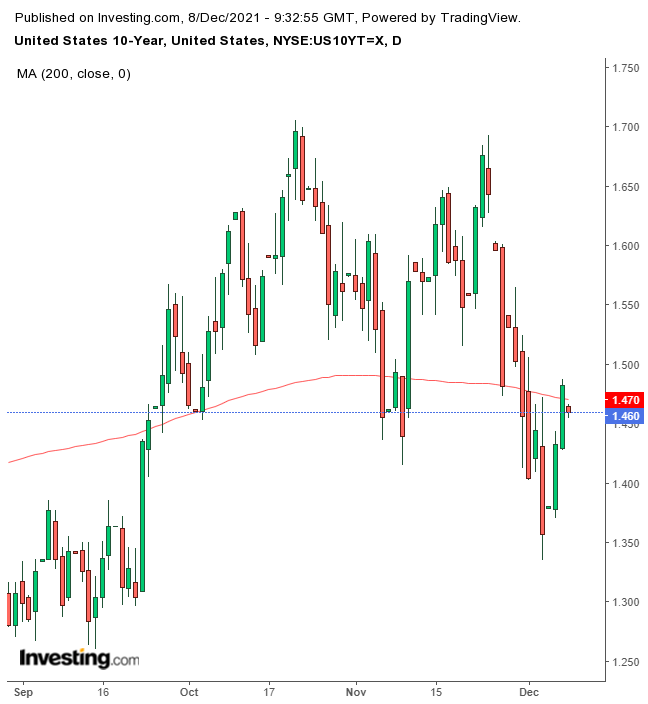
Rates fell below the 200 DMA, a natural neckline for a Double Top.
The dollar opened lower, ending a two-day rally.
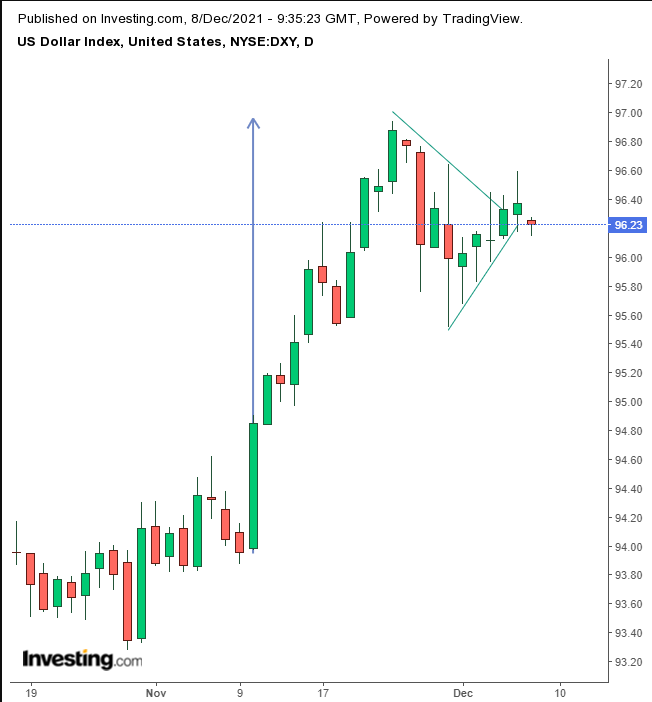
The trading range since Nov. 24 is in the shape of a pennant which we suspected was bullish after the preceding sharp rally fizzled out, meandering aimlessly through its apex.
Gold advanced for the second day as bulls forced the yellow metal back above its uptrend line, preventing an H&S top.
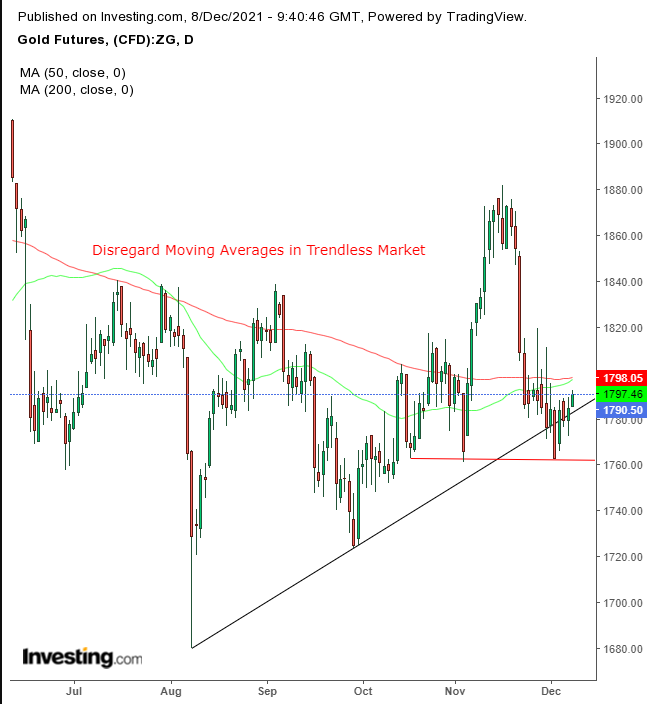
We urge traders to disregard moving averages in trendless markets. If the 50 DMA crossed above the 200 DMA, it is meaningless when the price has been moving sideways for six months. As its name implies, this indicator requires movement, or more aptly put, a trend.
Bitcoin fell, dropping below $50K at time of publishing.
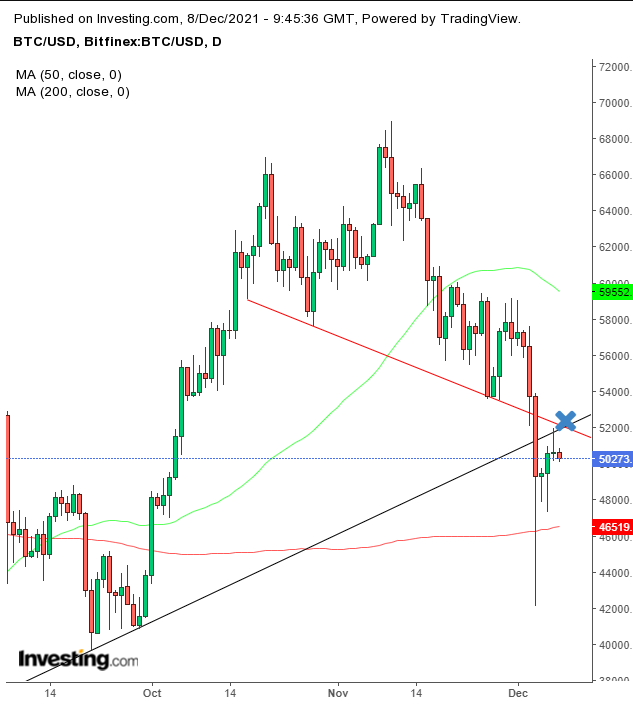
The digital token retreated from the dual resistance of the broken uptrend line and neckline of a downsloping H&S top, one so weak bulls couldn't provide sufficient demand to develop a right shoulder proportionate to the left one.
Oil edged higher, extending an advance to the third day.
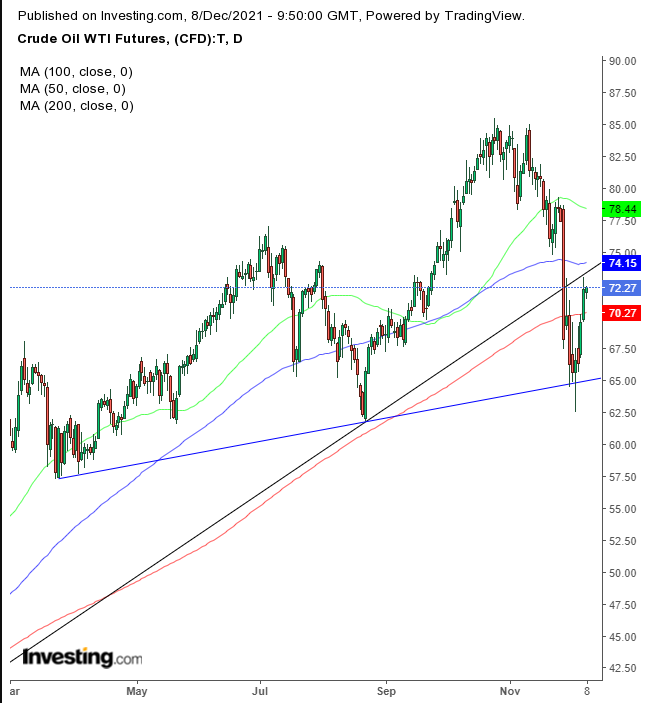
The price is resisting the underside of its broken uptrend line for a second day, reinforced by the 100 DMA. However, the price did scale above the 200 DMA.
Up Ahead
- US initial jobless claims are reported on Thursday.
- On Friday US CPI figures are published.
- China reports CPI figures on Friday
Market Moves
Stocks
- The STOXX 600 rose 0.5%
- Futures on the S&P 500 rose 0.3%
- Futures on the NASDAQ 100 rose 0.5%
- Futures on the Dow Jones Industrial Average rose 0.2%
- The MSCI Asia Pacific Index rose 1.9%
- The MSCI Emerging Markets Index rose 1.8%
Currencies
- The Dollar Index was little changed
- The euro rose 0.2% to $1.1285
- The Japanese yen was little changed at 113.57 per dollar
- The offshore yuan rose 0.2% to 6.3507 per dollar
- The British pound was little changed at $1.3241
Bonds
- The yield on 10-year Treasuries was little changed at 1.46%
- Germany's 10-year yield was little changed at -0.37%
- Britain's 10-year yield advanced two basis points to 0.75%
Commodities
- WTI advanced 0.42% to $72.35 a barrel
- Brent crude rose 0.4% to $75.78 a barrel
- Spot gold rose 0.2% to $1,787.60 an ounce
